6.6 Mount Vesuvius – August 79 CE
One major event of this time was the eruption of Mount Vesuvius about 2 hours north of Rome by car today in August 79 CE. The eruption killed between 15,000 and 30,000 when the cities of Pompeii and Herculaneum were completely covered with ash so deep that we are just now learning what lies beneath it. Although Vesuvius is still active it is dormant and scientists continue to monitor it for new activity. We know a good deal about the eruption from the writings of Pliny the Elder, who was killed trying to rescue people from the destruction and from his nephew Pliny the Younger.1
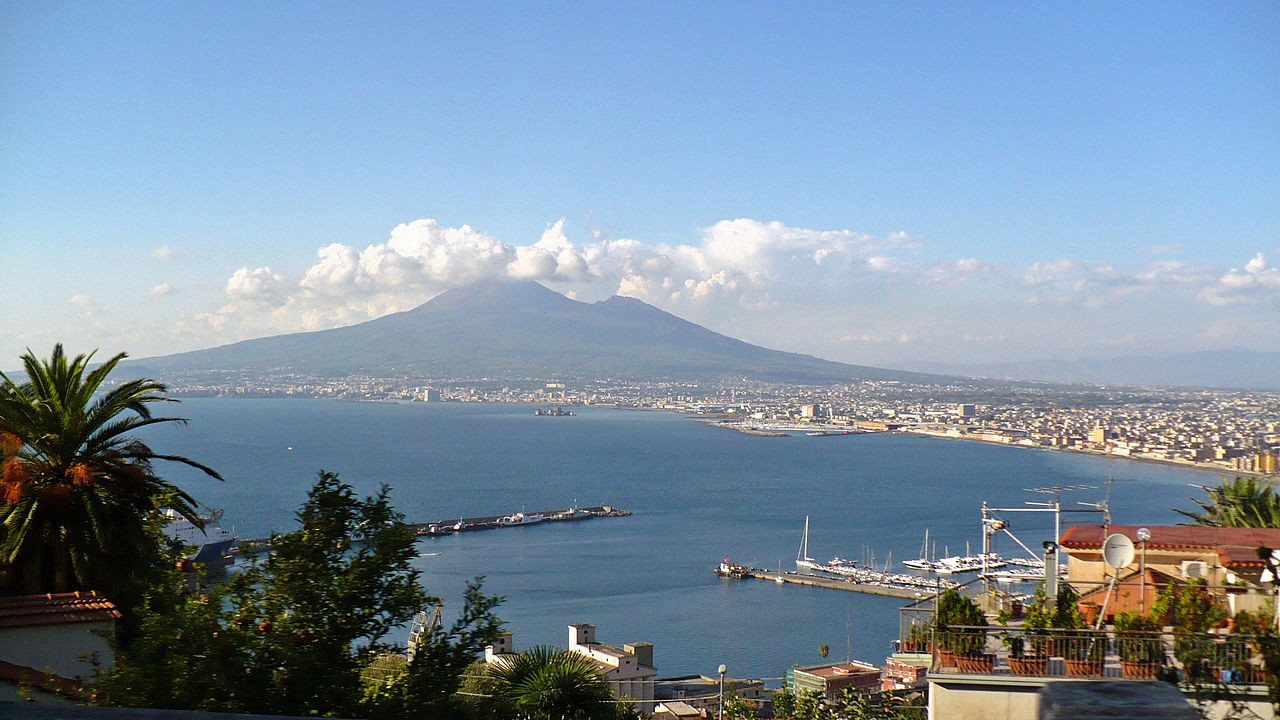
Pompeii was a well established city that probably housed about 20,000 people. This was a resort town that catered to wealthy patrons. As in any wealthy Roman town there was an amphitheater, cobblestone streets, and plenty of running water to provide fountains, reflecting pools, and baths.
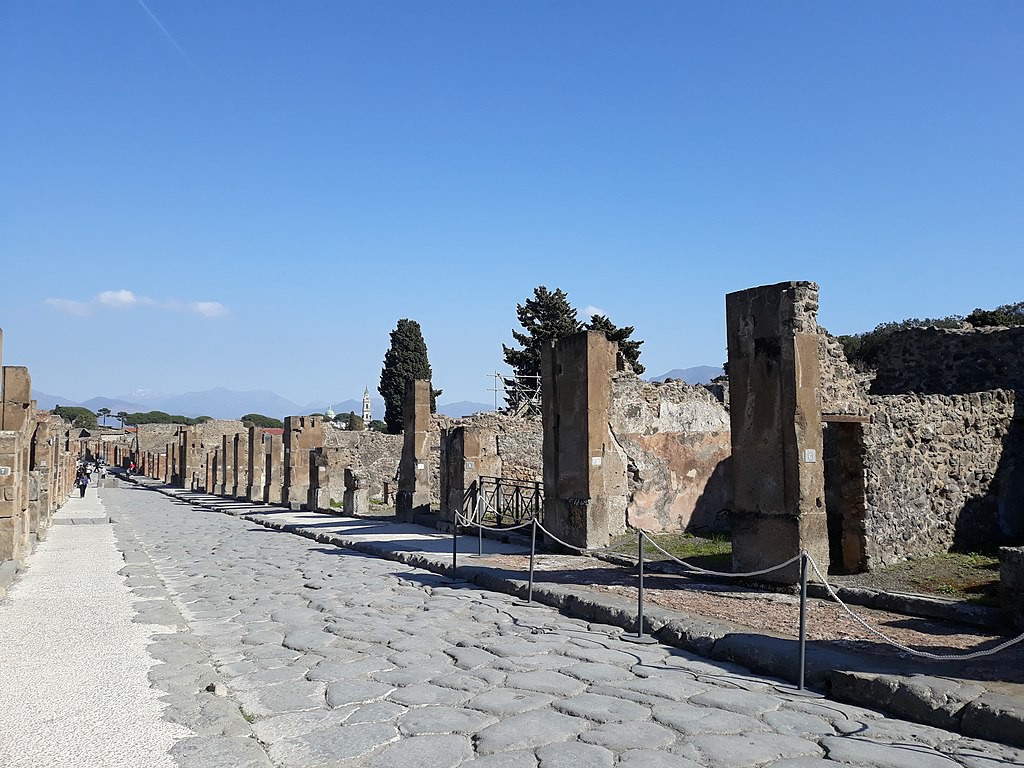
Many of the homes and businesses in Pompeii were managed by women, who were likely literate and well read. Women managed hundreds of slaves and had great power within the walls of their homes, but were kept from the public eye and had no career outside of the home. Slaves provided services, administered by the woman of the house. Since there was no middle class, a family had to retain slaves that could provide everything they needed. So for instance there was no shop in town to purchase clothing, so they had to have a slave to make it. Slaves were captured in battles fought by the Roman army in Egypt, Greece, and Tunisia. When the battle was over, the men were killed and the women and children were brought back to places like Pompeii to serve the wealthy patrons.
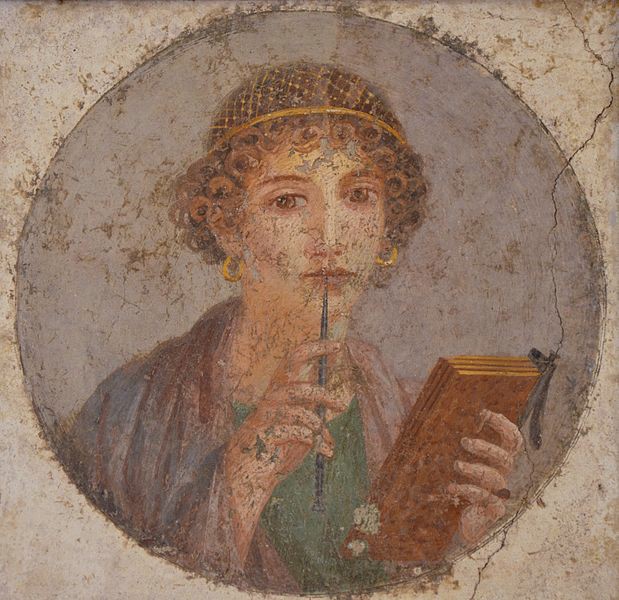
Greek slaves had been brought in to create sculpture for the gardens, intricate mosaics for the floors, and elaborate wall frescos. Since the destruction was so unexpected, many objects were left behind, including things like dice on the gaming tables, cosmetic boxes, and solid gold jewelry. As we excavate more and more of the city we continue to find stacks of bread on the table, books on their shelves, and people clinging to each other in their last moments of life. Image 6.60 shows a public thermopolia, what we might think of as a take-out restaurant. The holes in the marble counter held dolia, which are containers for drink and for dry food such as nuts, beans, olives, dates, and fruits.
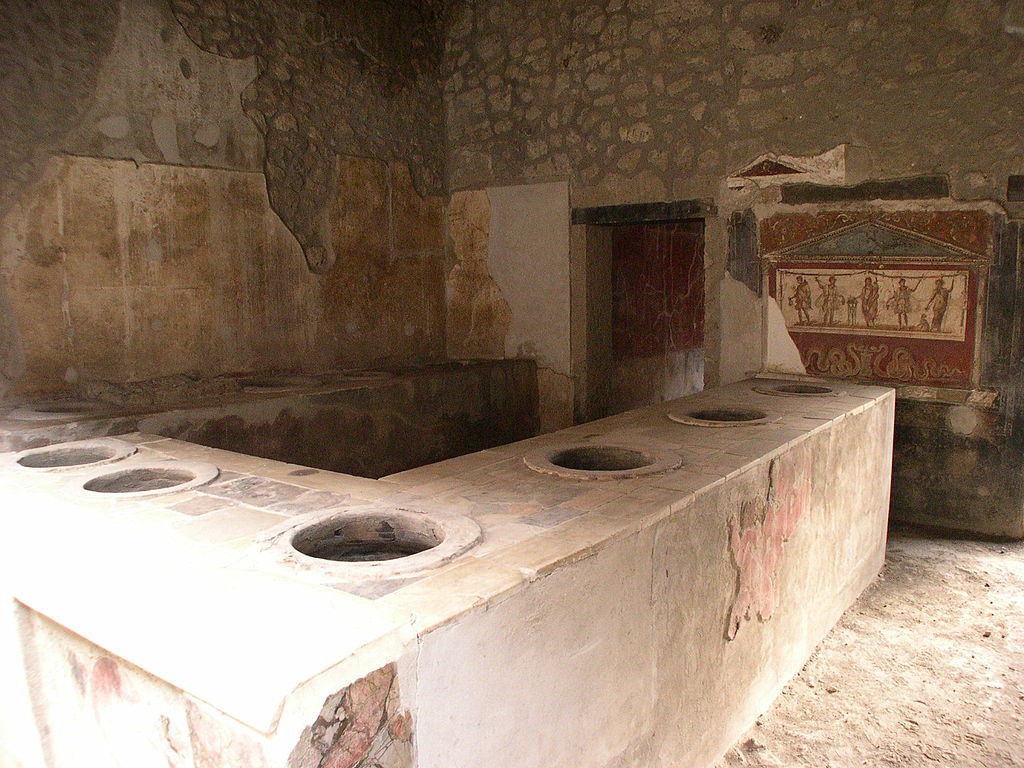
When the volcano erupted, no one was safe. The pyroclastic flow devastated the town and buried anyone who had not fled. There were several hours of pumice stone hail that gave some warning to the inhabitants, but not everyone was able to escape.
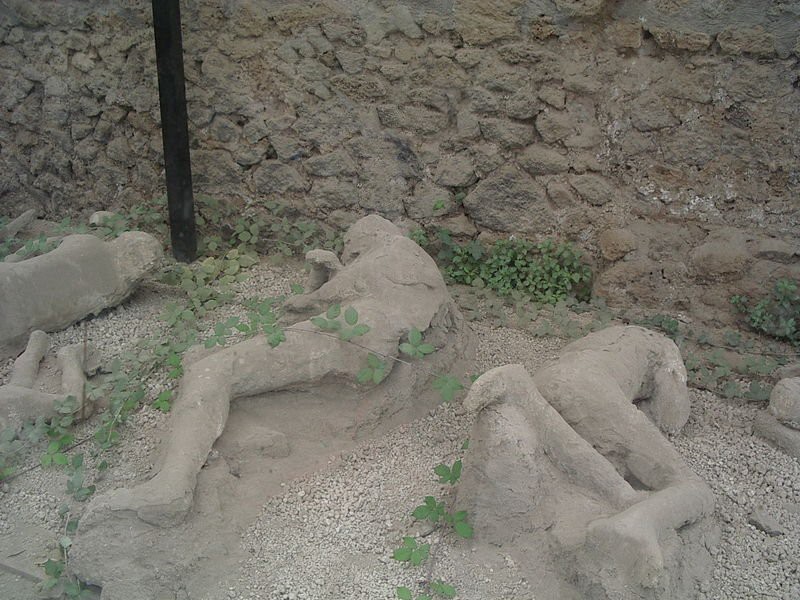
Another town that lay the foot of Mount Vesuvius and was buried by its fury was the town of Herculaneum. It was well known as the home of the Villa of Papiri, the largest ancient library found to date. It held thousands of ancient books in the form of scrolls and was home to the Epicurean scholar and philosopher Philodemus. About 1,800 scrolls have been found, but they were so carbonized that it was thought that they were charcoal to be used to heat the library and some were discarded. Today we realize there value and we are in the process of using NASA technology to read them.

There are still many unexcavated areas of Herculaneum, and it is hoped that these areas contain more books that can eventually be read and preserved. Even though Herculaneum was a center of intellectual discourse, ritual bathing, and grand architecture, it too was destroyed. A series of boathouses has been found along the shoreline, and they house a grisly collection of skeletons. See image 6.63. Since Romans cremated their dead, these are rare examples of Roman skeletons left intact for scientists to study.

Herculaneum is filled with intricate mosaic floors and colorful wall paintings and mosaics. It will be decades before these delicate works are all excavated and preserved.
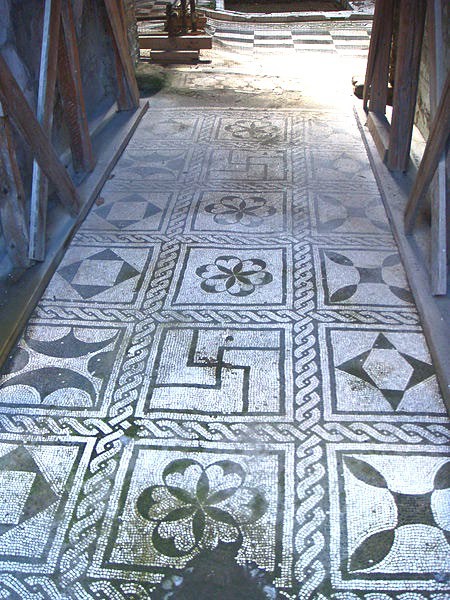
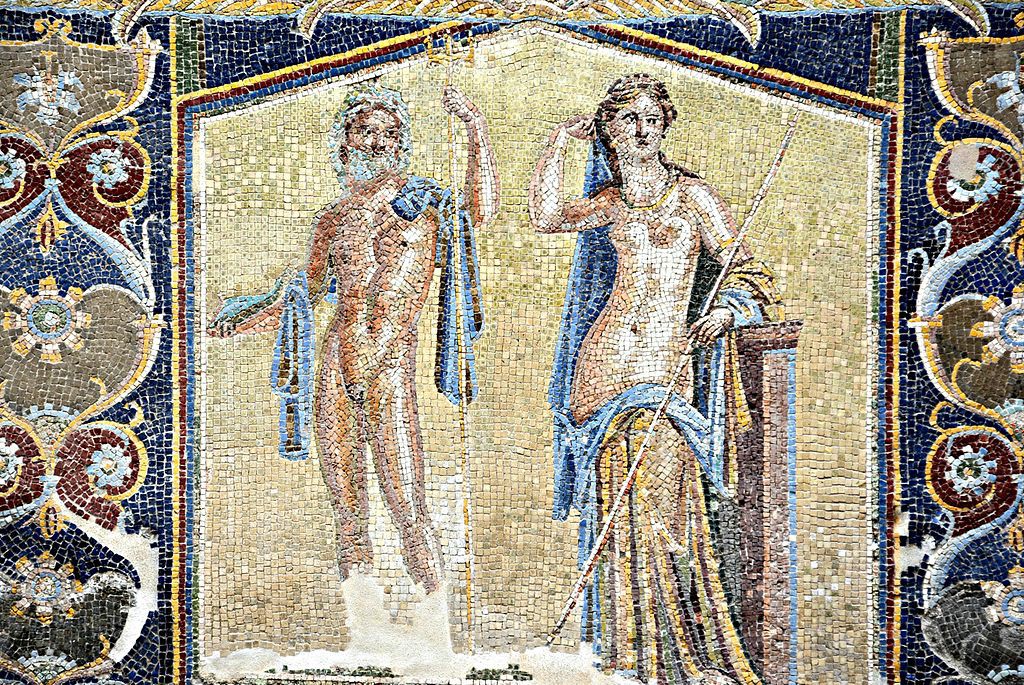
Attribution:
Some thoughts were taken from: Berger, Eugene; Israel, George; Miller, Charlotte; Parkinson, Brian; Reeves, Andrew; and Williams, Nadejda, “World History: Cultures, States, and Societies to 1500” (2016). History Open Textbooks. 2.
References:
1. http://pompeii.virginia.edu/pliny.html
2. Photo by Colin W, CC BY-SA 3.0. https://commons.wikimedia.org/wiki/File:Mount_Vesuvius_-_panoramio.jpg
3. Photo by Simon Burchell, CC BY-SA 4.0. https://commons.wikimedia.org/wiki/File:Pompeii,_Italy_217.jpg
4. Photo by Carole Raddato, CC BY-SA 2.0. https://commons.wikimedia.org/wiki/File:Fresco_showing_a_woman_so- called_Sappho_holding_writing_implements,_from_Pompeii,_Naples_National_Archaeological_Museum_(1484210189 2).jpg
5. Photo by Mosborne01, CC BY-SA 2.0. https://commons.wikimedia.org/wiki/File:Pompeii_thermopolium_interior.jpg
6. Photo by Soren Bleikertz, CC BY-SA 3.0. https://commons.wikimedia.org/wiki/File:Pompeji_schlafende_SaE.jpg
7. Ethel Ross Barker, Buried Herculaneum, 1908. Public domain. https://commons.wikimedia.org/wiki/File:Villa-of-the-Papyri- restored-1.jpg
8. Photo by Norbert Nagel, CC BY-SA 3.0. https://commons.wikimedia.org/wiki/File:Herculaneum_-_Ercolano_-_Campania_-_Italy_ _July_9th_2013_-_32.jpg
9. Photo by Nancy J. Price, CC BY-SA 3.0. https://commons.wikimedia.org/wiki/File:Herculaneum-mosaic-floor-0409.jpg
10. Photo by Mentnafunangann. CC BY-SA 4.0. https://commons.wikimedia.org/wiki/File: Casa_di_Nettuno_ e_Anfitrite_ (Ercolano)_ WLM_003.JPG

